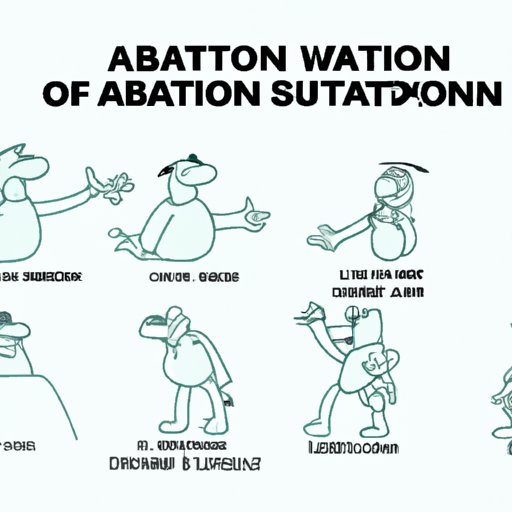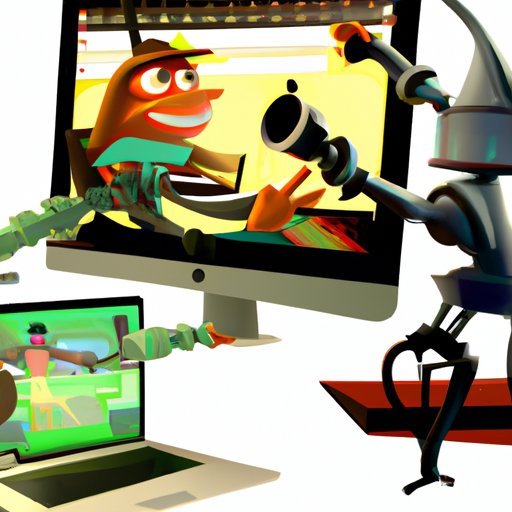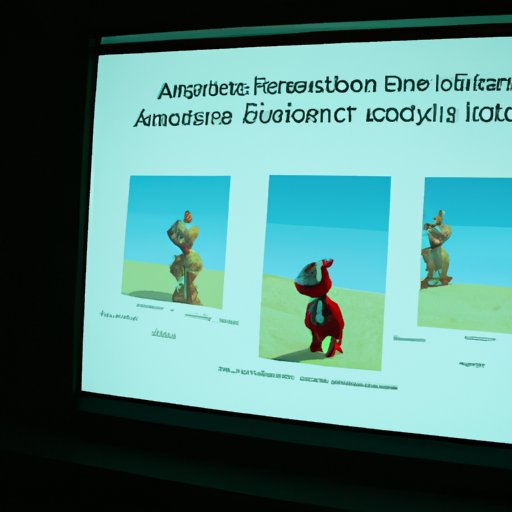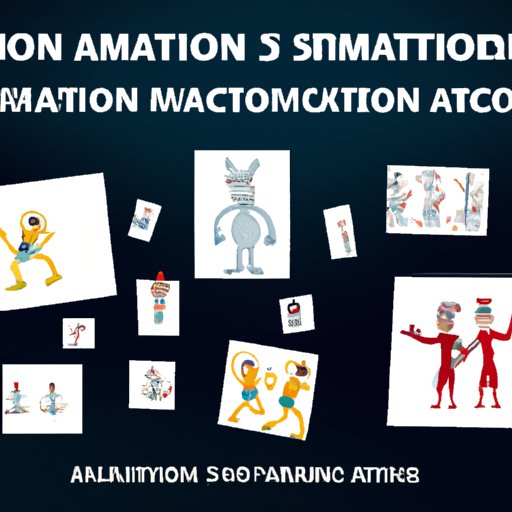Introduction
Animation is an art form that has been around for centuries and continues to evolve with advances in technology. It has become a popular medium for storytelling, entertainment, education, and advertising, and has had a tremendous impact on culture and society. But how does animation work exactly? This article will explore the basics of animation production, the different types of animation techniques, the role of technology in animation, the principles of animation, and the role of storytelling in animation, as well as the impact of animation on society.

Explaining the Basics of Animation Production
Animation is the process of creating the illusion of motion by displaying still images in succession. Animators create characters and objects out of shapes and colors, and then use computer software and other tools to bring them to life. The process of making an animated film involves many steps, including storyboarding, character design, background design, animation, sound design, and post-production.
The Different Types of Animation Techniques
Animators use a variety of techniques when creating animations. Traditional animation, also known as cel animation or hand-drawn animation, is one of the oldest forms of animation, and involves drawing each frame of the animation by hand on transparent sheets. Computer animation, which uses computer software to create three-dimensional (3D) models and two-dimensional (2D) images, is the most commonly used technique today. Stop motion animation is another popular technique that involves taking pictures of physical objects and manipulating them slightly to create the illusion of movement. Claymation is a type of stop motion animation that uses clay figures instead of physical objects. Cutout animation is another technique that involves moving cut-out pieces of paper or fabric to create the illusion of movement. Each of these techniques has its own unique benefits and drawbacks.

Examining the Role of Technology in Animation
Technology has had a huge impact on the animation industry. Advances in animation software have made it easier for animators to create high-quality animations quickly and efficiently. Software programs such as Adobe After Effects, Autodesk Maya, and Blender allow animators to create 3D models and animate them with ease. Additionally, technology has allowed animators to collaborate remotely, allowing them to work with people from all over the world.
Understanding the Principles of Animation
The principles of animation are guidelines that animators follow when creating their work. Timing and spacing refer to the timing and spacing of the movements of an object. Appeal refers to the visual appeal of the characters and backgrounds in an animation. Squash and stretch is a technique used to give objects a sense of weight and flexibility. Exaggeration is the use of exaggeration to emphasize certain actions or emotions. Secondary action is the use of additional movements to enhance the main action. Follow through and overlapping action refer to the way objects move after they stop moving. Slow in and out is a technique used to create a more realistic sense of motion. Arcs refer to the natural arcs that objects make when they move.
Investigating the Role of Storytelling in Animation
Storytelling is an essential part of animation. Animators must create believable characters that viewers can identify with and craft interesting plots that keep viewers engaged. They must also establish a visual style that fits the story and helps convey the emotion and tone of the animation. Animators must also consider the pacing of the animation, as well as the camera angles, lighting, and color palette.

Analyzing the Impact of Animation on Society
Animation has had a profound impact on society. In education, animation has been used to teach complex concepts in a fun and engaging way. In entertainment, animation has been used to create some of the most beloved films and television shows of all time. In advertising and media, animation has been used to create memorable visuals and messages that resonate with consumers. Animation has truly changed the way we view the world.
Conclusion
In conclusion, this article has explored the basics of animation production, the different types of animation techniques, the role of technology in animation, the principles of animation, and the role of storytelling in animation, as well as the impact of animation on society. Animation is a powerful art form that continues to evolve and has had a profound impact on culture and society. Thanks to advances in technology, animators are now able to create stunning animations quickly and efficiently. With the right knowledge and skills, anyone can create beautiful animations and tell compelling stories.
(Note: Is this article not meeting your expectations? Do you have knowledge or insights to share? Unlock new opportunities and expand your reach by joining our authors team. Click Registration to join us and share your expertise with our readers.)
